- Thursday was the 75th anniversary of D-Day, the seaborne invasion of Nazi-occupied France that changed the course of World War II.
- The opened up another front in the war, dividing Nazi forces.
- Peter Macdiarmid’s photographs show the human cost and devastation the invasion took.
- The images compare how the affected areas looked right after D-Day to how they looked more recently.
- Visit Business Insider’s homepage for more stories.
Seventy-five years ago, on June 6, 1944, Allied soldiers stormed Juno Beach in Nazi-occupied France, changing the course of World War II.
The D-Day invasion, code named Operation Overlord, was the largest seaborne invasion in history.
Almost 5,000 landing and assault craft accompanied by 289 escort vessels and 277 minesweepers from Canada, the US, Britain, and Australia took part in the operation. The Allies suffered 226,386 casualties, but it proved a decisive moment in the war.
Suddenly, the Nazis were forced to fight on another front in Europe. But the cost of D-Day, in both human lives and devastation of the surrounding regions of France, was immense.
The following photos from the Getty photographer Peter Macdiarmid show an amazing juxtaposition of images from the affected areas of modern France with photos of the invasion from 1944 overlaid on top.
Jeremy Bender composed an earlier version of this article.
Juno Beach on May 8, 2014, in Bernieres sur Mer, France, juxtaposed with a Canadian soldier at the head of a group of German prisoners of war, including two officers, on Juno Beach on June 6, 1944.

The old village fountain on May 7, 2014, in Sainte Marie du Mont, France, where a group of American soldiers stood on June 12, 1944.

A view of the roadway on May 7, 2014, in Saint Lo, France, where US Army trucks and jeeps once drove through.
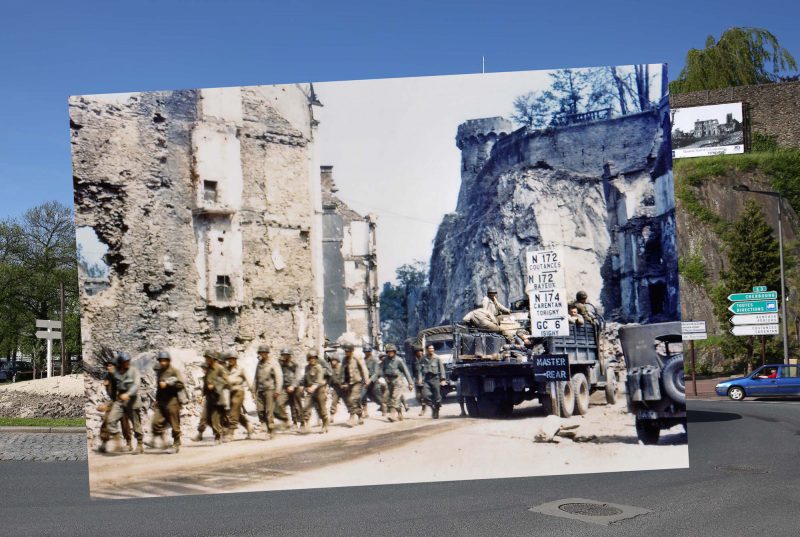
The cliffs on May 6, 2014, in Pointe du Hoc, France, where German prisoners were gathered as an American flag was deployed for signaling on Omaha Beach.
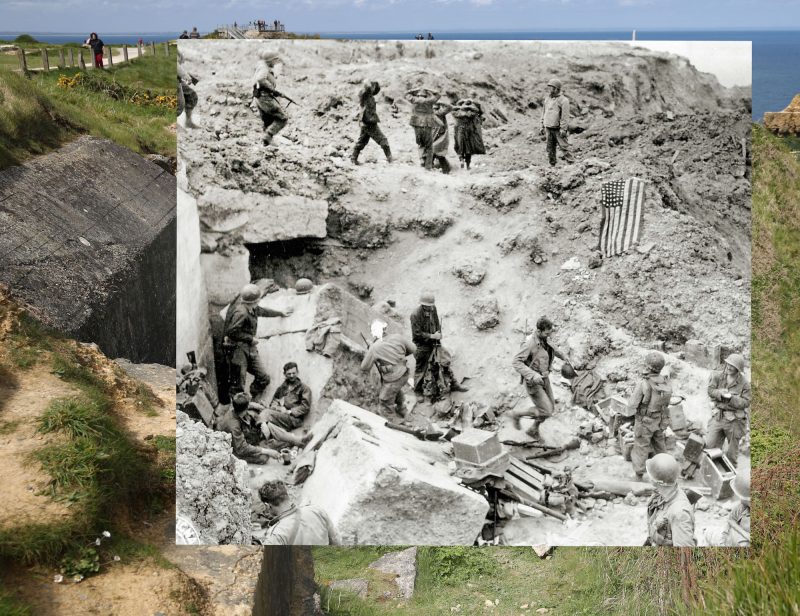
A view of the market square on May 6, 2014, in Trevieres, France, juxtaposed with the image of the body of a German soldier belonging to the 2. Infanterie Regiment on the Market Square on June 15, 1944.

The street area and Notre-Dame Nativity church on May 5, 2014, in Bernieres-sur-Mer, France, where a Canadian soldier was directing traffic on D-Day.

The seafront and Juno Beach on May 5, 2014, in Bernieres-sur-Mer, France, juxtaposed with troops of the 3rd Canadian Infantry Division landing at the beach on D-Day.
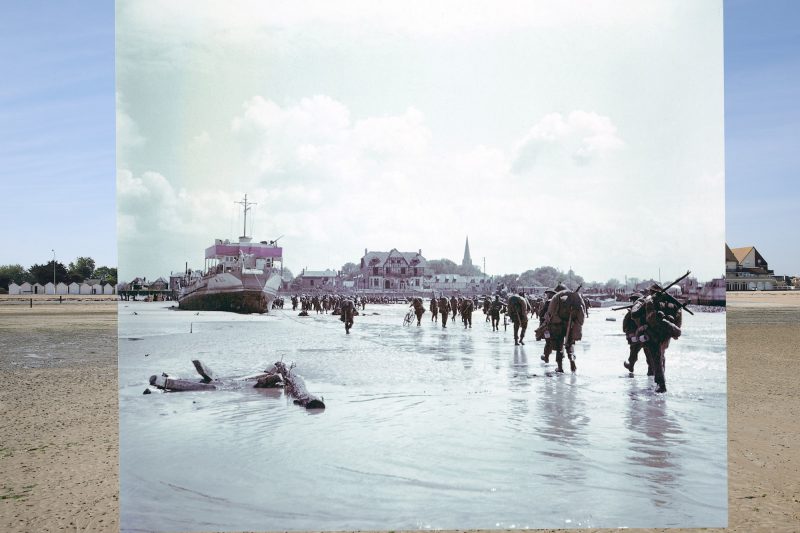
The rue de Bayeux on May 5, 2014, in Caen, France. An older couple watched a Canadian soldier with a bulldozer working in the ruins of a house in the rue de Bayeux on July 10, 1944.
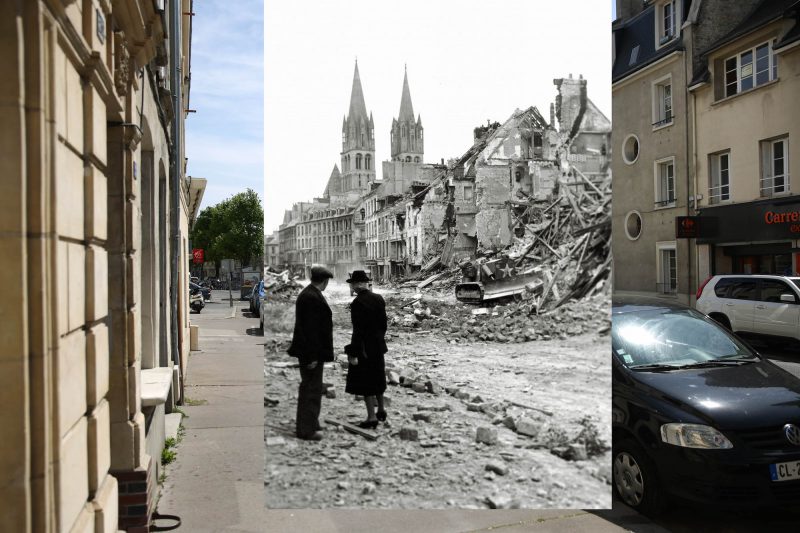
The graveyard with the church of Saint Georges de Basly in the background on May 5, 2014, in Basly, France, seen juxtaposed with three soldiers of the 23rd Field Ambulance of the 3rd Canadian Infantry Division placing flowers on graves.
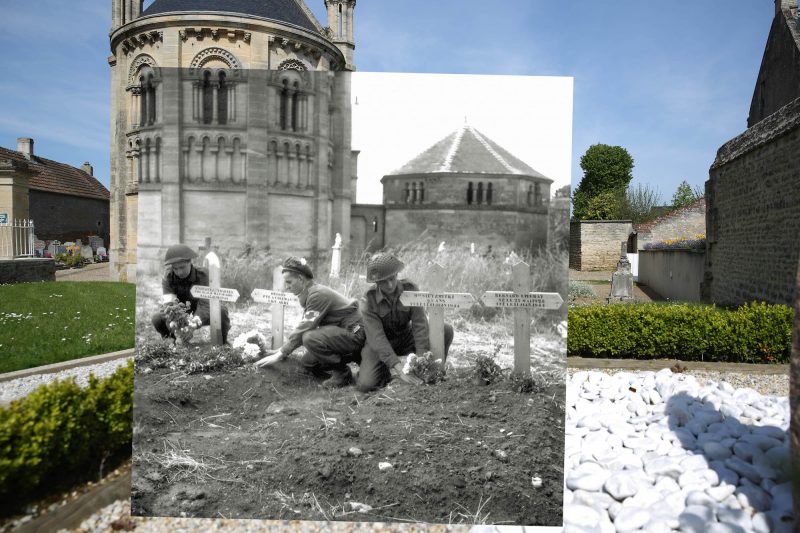
The seafront on April 5, 2014, in Weymouth, England, where US troops walked on the Esplanade on their way to embark on ships bound for Omaha Beach for the D-Day landings in Normandy in June 1944.
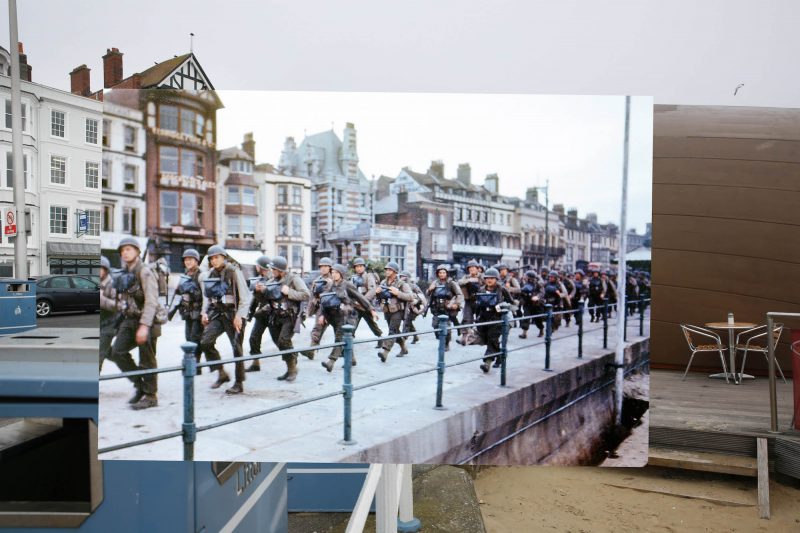
The harbor on April 5, 2014, in Weymouth, England, where boats full of US troops waited to take part in Operation Overlord in Normandy in June 1944.


